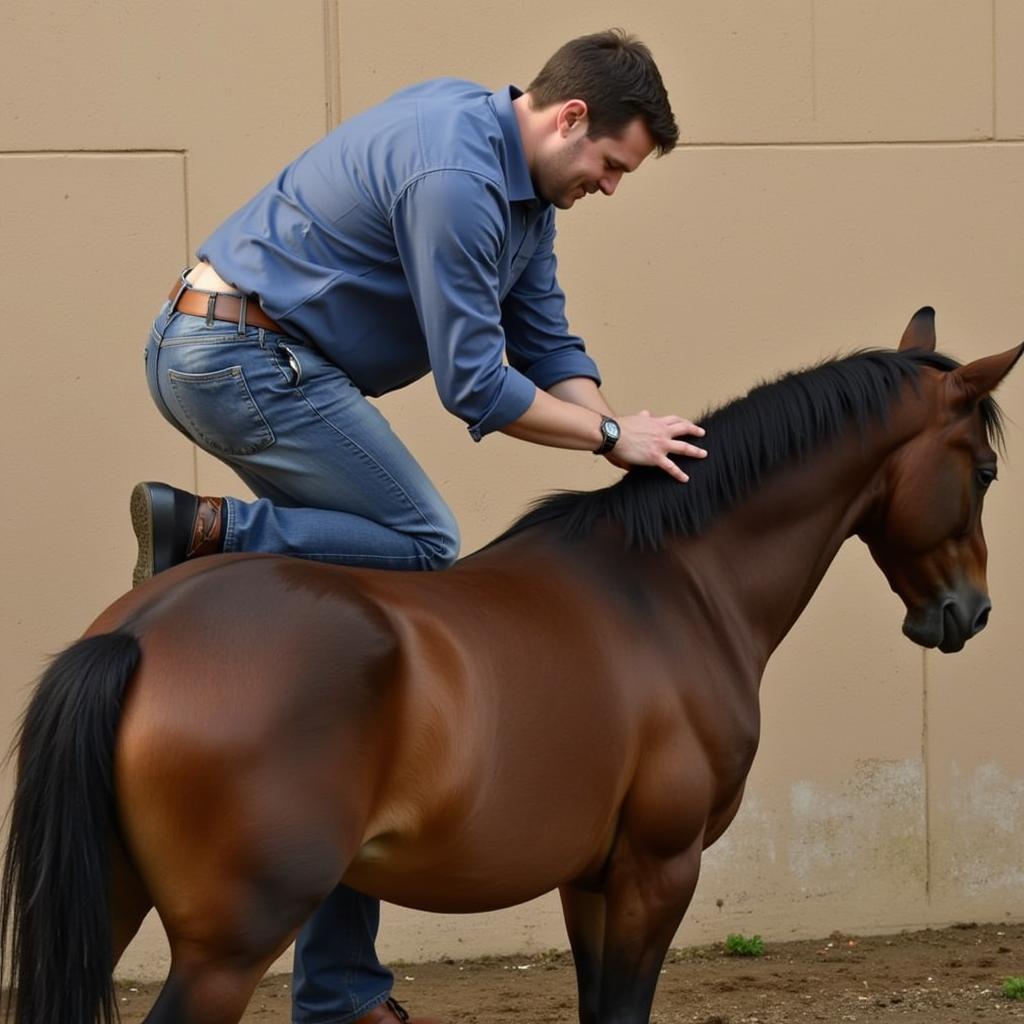Cross firing, also known as “interfering,” is a common gait abnormality in horses where the hind leg on one side strikes the opposite front leg. This typically occurs during the transition phases of gaits, particularly when the horse is moving at faster speeds like trotting or cantering. While it might appear as a minor inconvenience, cross firing can lead to significant performance issues, lameness, and even injuries if left unaddressed.
Causes of Cross Firing in Horses
Several factors can contribute to cross firing, ranging from conformation flaws to underlying medical conditions.
- Poor Conformation: Horses with a narrow chest, base-narrow stance, or uneven leg length are predisposed to cross firing. Their anatomy makes it challenging to maintain proper limb coordination, increasing the risk of interference.
- Fatigue and Weakness: When muscles fatigue, they lose their ability to precisely control limb movement. This is particularly true for horses that lack proper conditioning, leading to cross firing, especially during prolonged exercise.
- Pain and Discomfort: Cross firing can be a compensatory mechanism for horses experiencing pain in their back, hips, or legs. They may shift weight and alter their gait to minimize discomfort, inadvertently causing interference.
- Rider Imbalance: A rider’s weight and balance significantly influence a horse’s movement. An unbalanced rider can cause the horse to shift its weight unevenly, contributing to cross firing.
- Neurological Issues: In rare cases, cross firing may indicate an underlying neurological condition affecting the horse’s coordination and gait.
Symptoms and Diagnosis
Recognizing the signs of cross firing is crucial for early intervention. While some horses may exhibit obvious striking of the legs, others display subtler symptoms, such as:
- Clicking or Forging Sound: A characteristic clicking or forging sound during movement, especially at faster gaits.
- Uneven Gait: The horse’s gait may appear uneven or choppy, lacking fluidity and symmetry.
- Reluctance to Move Forward: Horses experiencing cross firing may be reluctant to move forward freely, especially at faster speeds, due to discomfort or fear of interference.
- Worn Shoes or Hooves: Abnormal wear patterns on the horse’s shoes or hooves, particularly on the inside surfaces, can indicate chronic cross firing.
Diagnosing the root cause of cross firing typically involves a comprehensive examination by a veterinarian or equine professional. This may include observing the horse’s conformation, evaluating its gait at various speeds, and performing lameness exams to identify any underlying pain or discomfort.
Treatment and Management
Treating cross firing effectively depends on identifying and addressing the underlying cause.
- Corrective Shoeing: Farriers can use specialized shoeing techniques to influence the horse’s gait and minimize interference. This may involve using weighted shoes, extensions, or pads to alter the timing and breakover of the hooves.
- Physical Therapy: Techniques like massage, stretching, and chiropractic care can help address muscle imbalances, improve flexibility, and alleviate pain contributing to cross firing.
- Exercise Modifications: Adjusting the horse’s exercise regimen to include activities that strengthen the appropriate muscles and improve coordination can be beneficial.
- Rider Education: Riders must be aware of their position and balance and how it affects the horse. Lessons focused on rider biomechanics and improving balance can significantly reduce cross firing.
 Equine Chiropractic Treatment
Equine Chiropractic Treatment
“Addressing cross firing early is essential,” says Dr. Sarah Williams, DVM, an equine veterinarian specializing in lameness. “Ignoring the issue can lead to more significant problems, including lameness, injuries, and chronic performance issues. A multi-faceted approach involving veterinary care, farriery, and rider education yields the best outcomes.”
Conclusion
Cross firing is a common gait abnormality in horses that can significantly impact their performance and well-being. Recognizing the causes, symptoms, and implementing appropriate treatment strategies is essential for preventing further complications. By working closely with a veterinarian, farrier, and other equine professionals, horse owners can help their horses move comfortably and perform at their best.
FAQs
1. Can cross firing be cured?
The success of treatment depends on the underlying cause. While conformational flaws may not be entirely curable, corrective shoeing and management strategies can effectively minimize cross firing.
2. Is cross firing painful for horses?
While some horses may not exhibit signs of pain, cross firing can cause discomfort and even lead to injuries if left untreated.
3. Can any breed of horse develop cross firing?
Cross firing can affect any breed of horse, but certain breeds with conformational predispositions, such as Standardbreds and pacers, might be more susceptible.
For further assistance with your horse’s health and well-being, please contact us at Phone Number: 0772127271, Email: [email protected] Or visit us at: QGM2+WX2, Vị Trung, Vị Thuỷ, Hậu Giang, Việt Nam. Our dedicated team is available 24/7 to provide support.